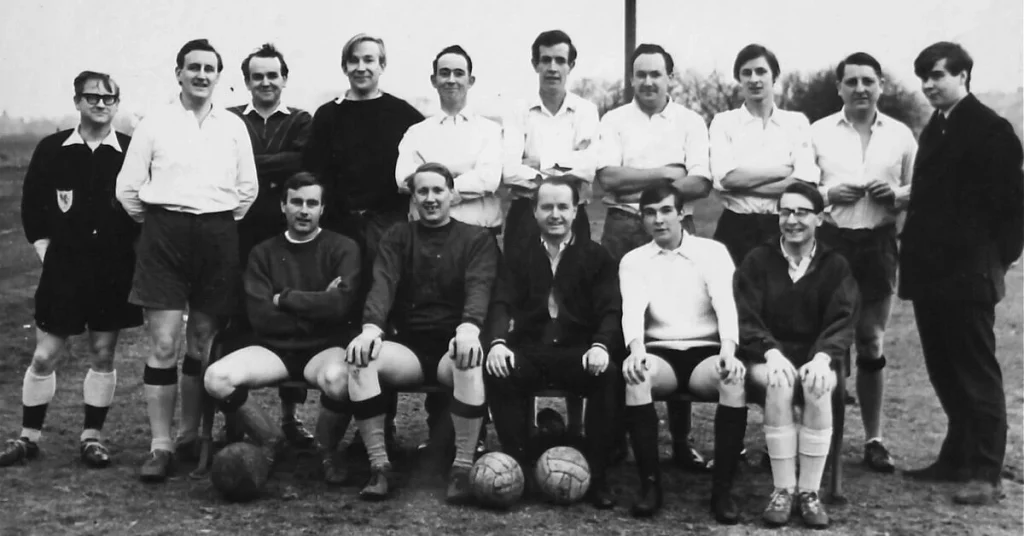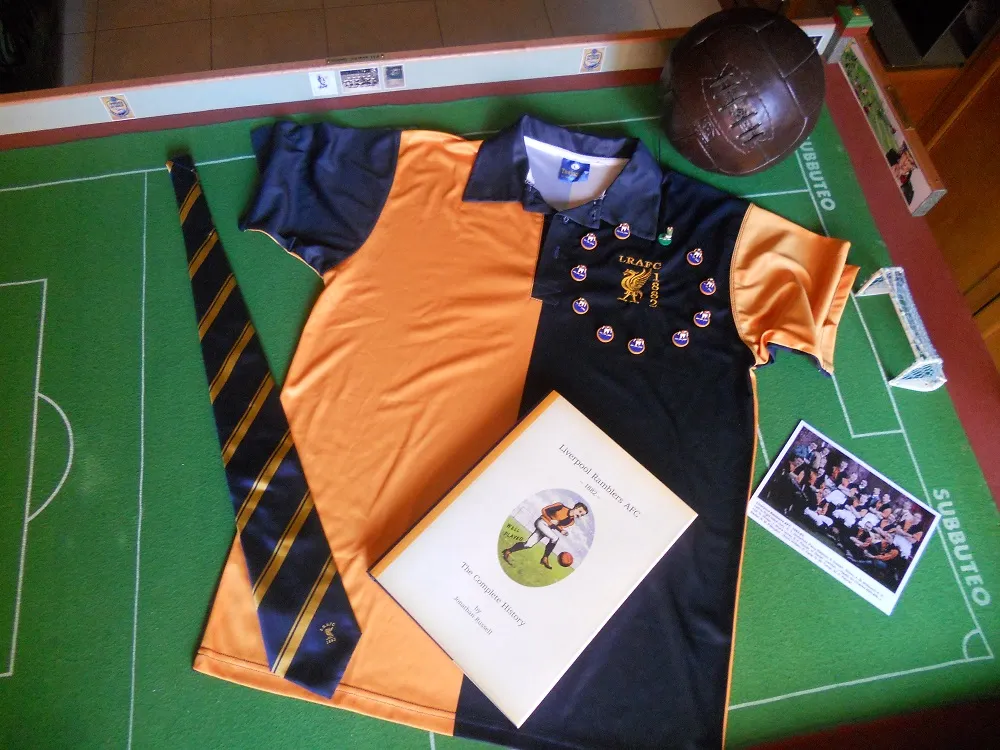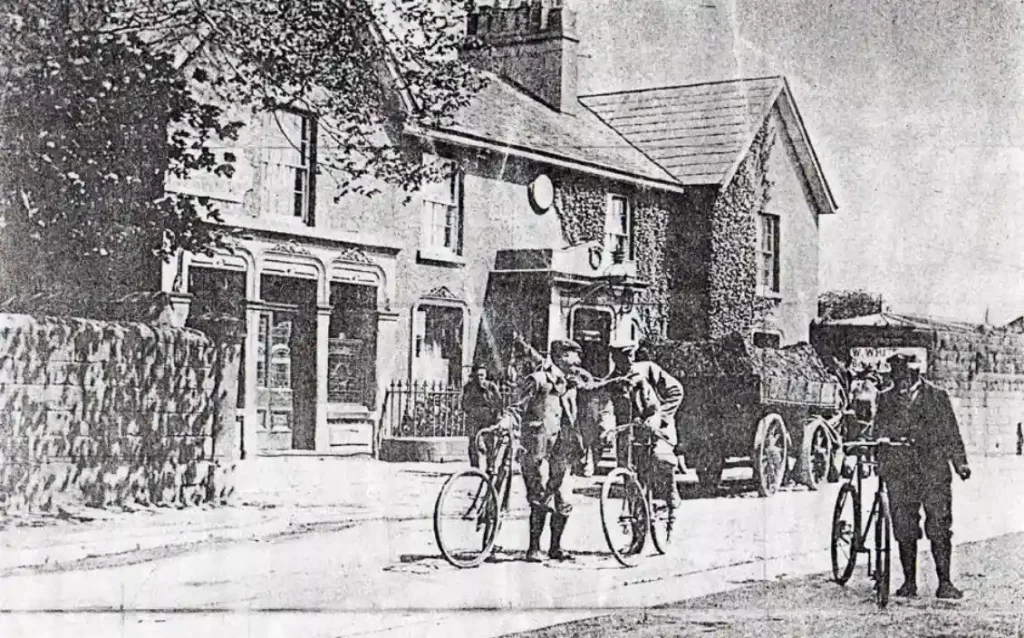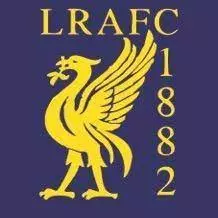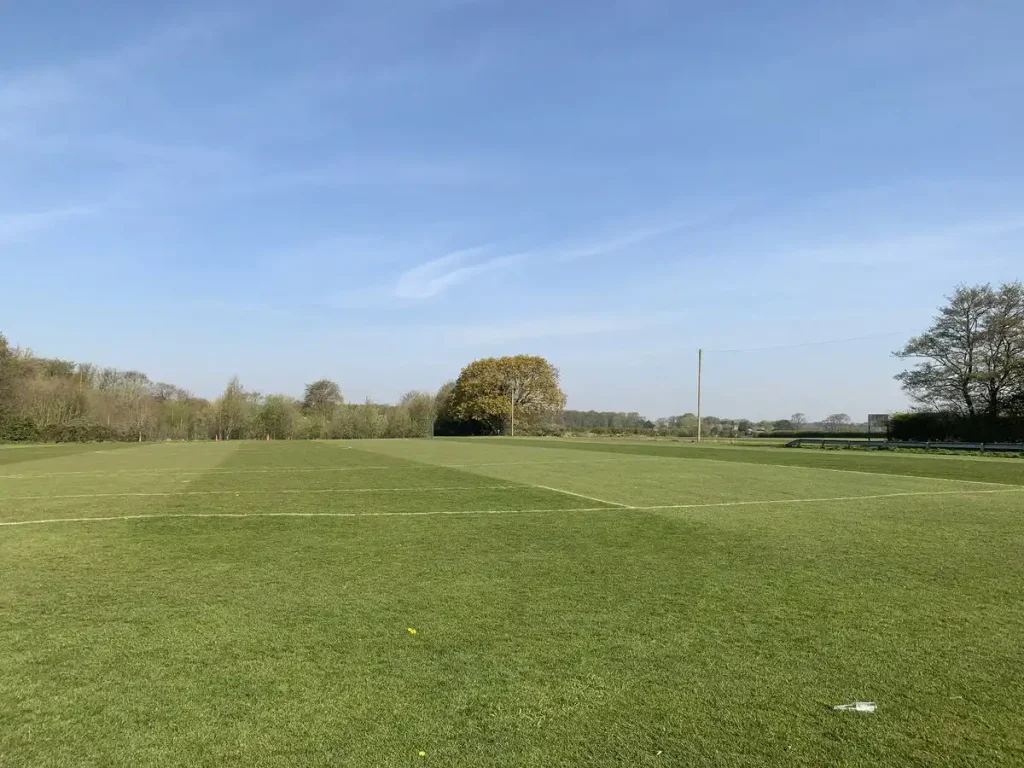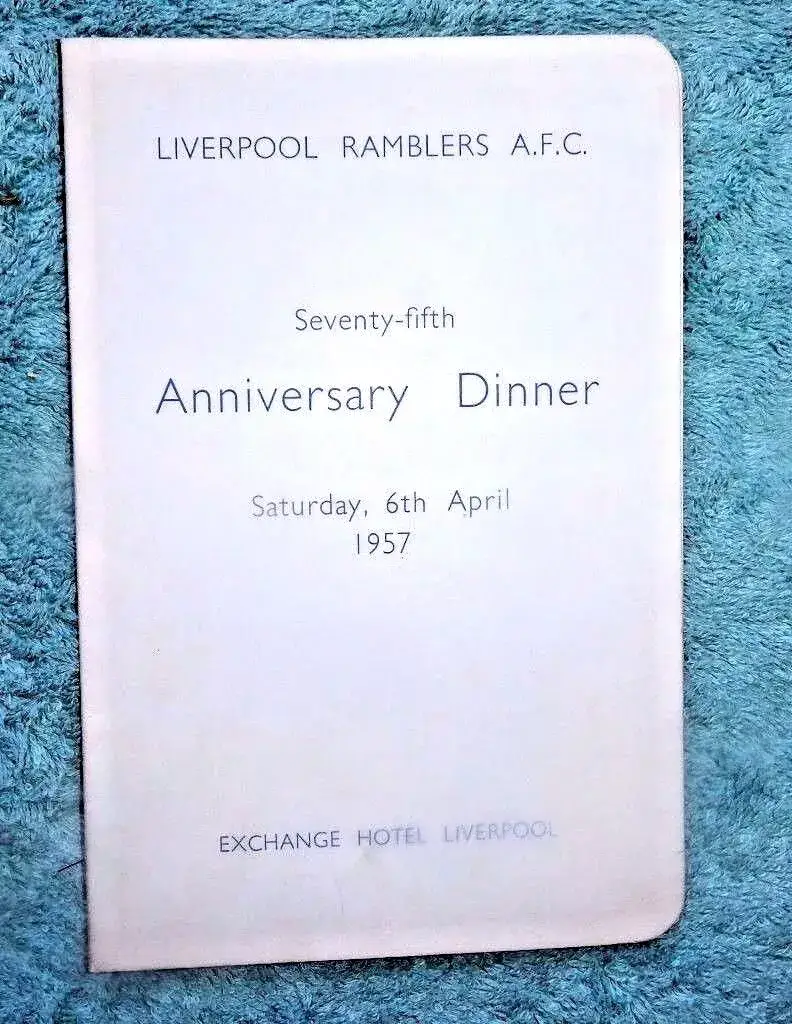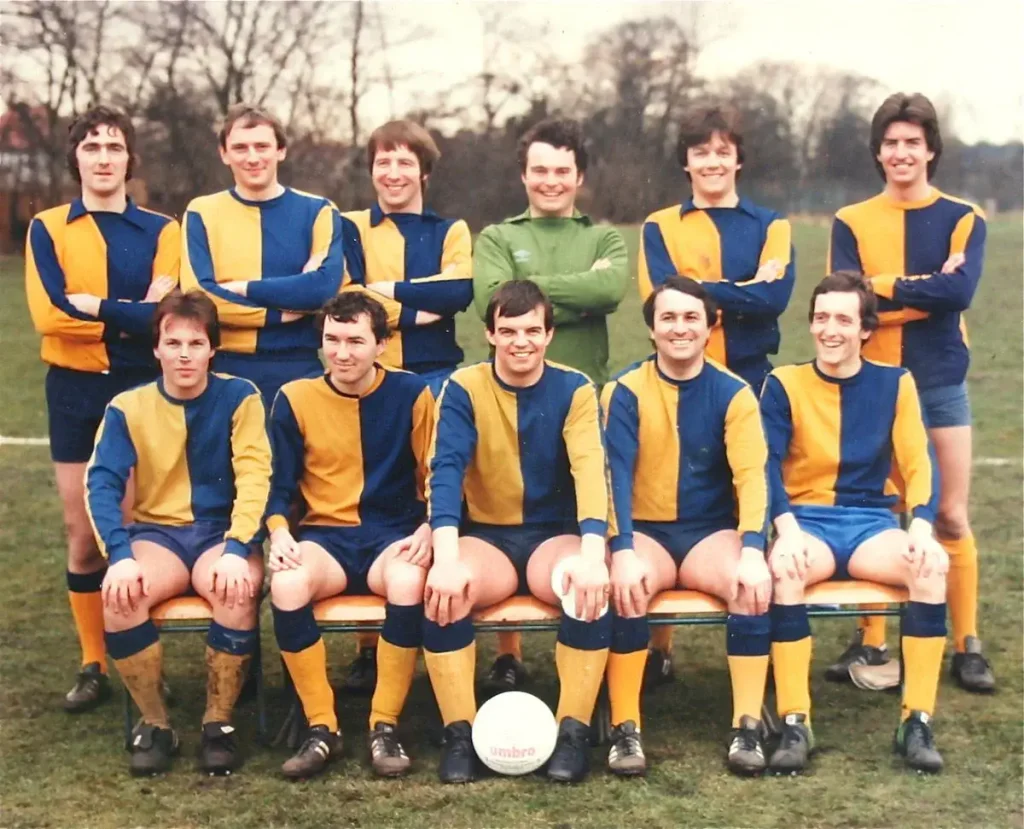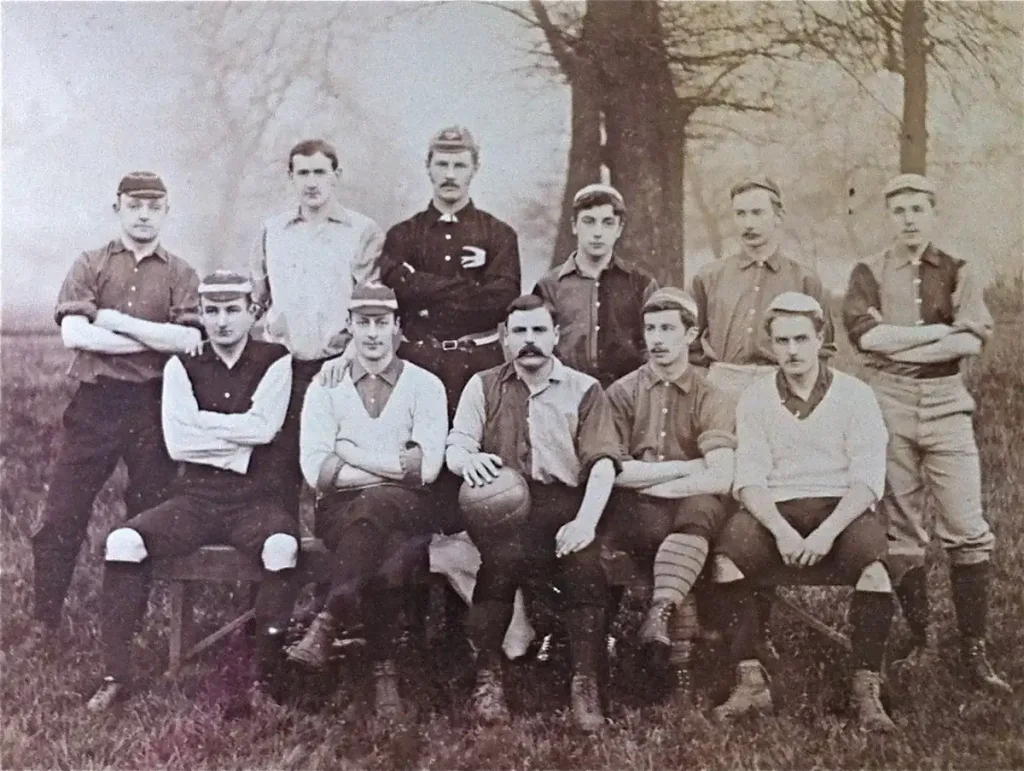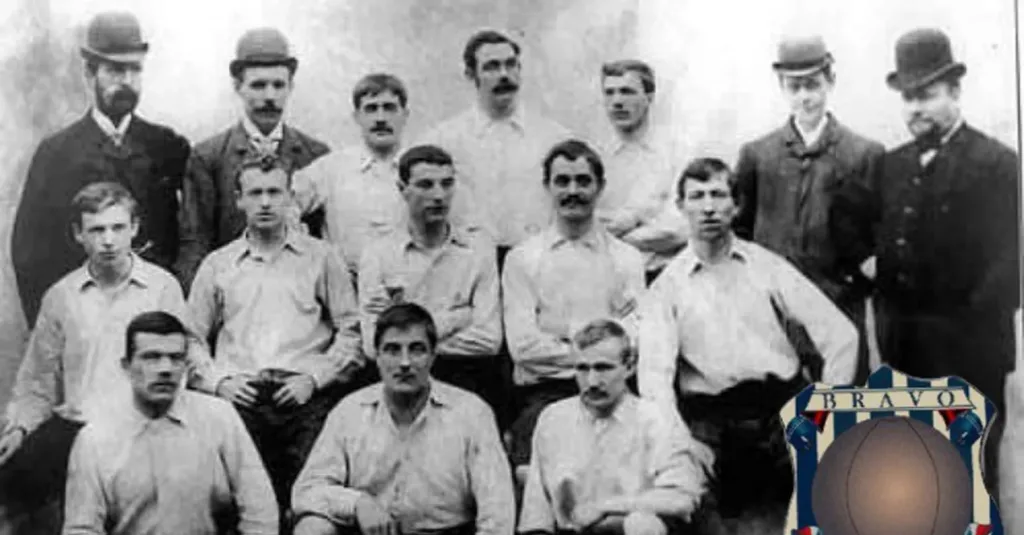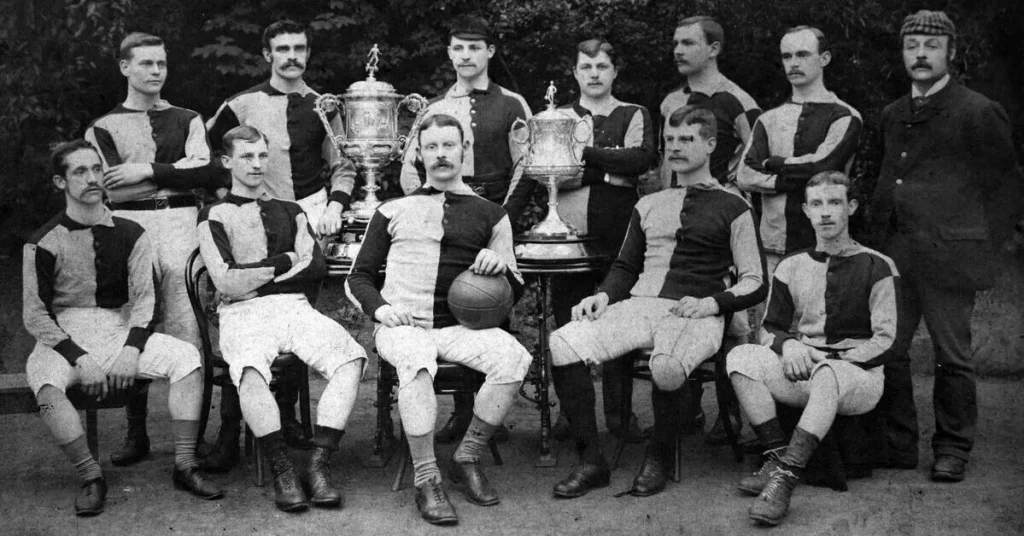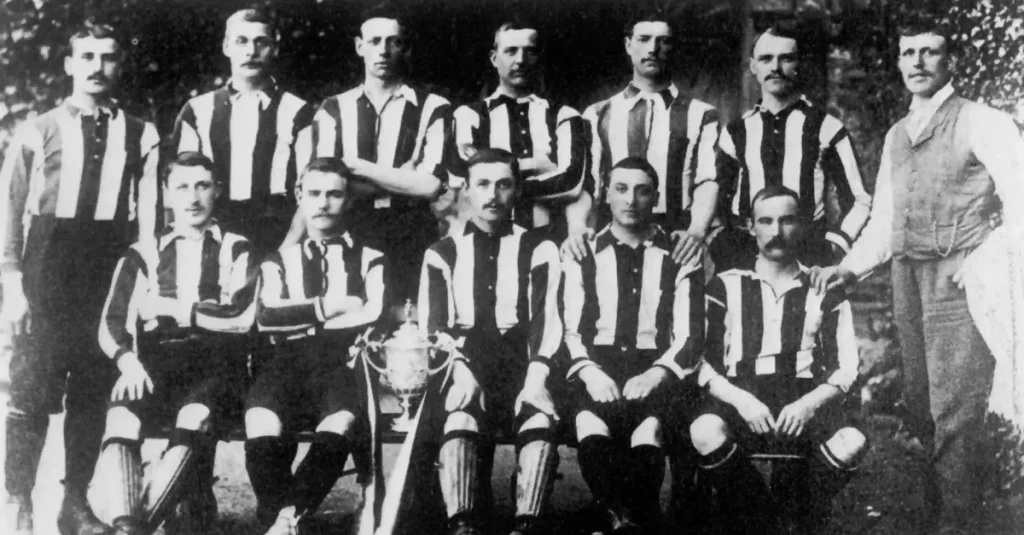You could be forgiven when driving past the present-day Liverpool Ramblers football club for thinking that the game in progress is no more than an everyday local match, but this is not the case on closer examination. Liverpool Ramblers AFC is the only club to link the Merseyside area with the very origins of the game of association football.
The football ground is situated on the northern outskirts of Liverpool and is flanked on one side by woodland and surrounded on two sides by farmland. The picket-fenced playing area contains two well-maintained and perfectly flat playing pitches, while firmly constructed near the entrance stands the clubhouse and dressing rooms.
The building is brick and fronted by a large sliding patio door. This affords the present-day non-playing members a good view of the prominent soccer pitch while enjoying the beverage of their choice from the shelter of the club lounge.
When Was Liverpool Ramblers AFC Founded
Liverpool Ramblers AFC began their playing days in 1882. They were one of the founder members of the Liverpool Football Association and today, along with Everton Football Club, are the only survivors of those original members.
The Ramblers were founded at the offices of local solicitors Bateson and Sons. Percy Bateson had, along with GW Turner, turned out for Bootle one year earlier against Blackburn Law Society in the first-ever FA Cup tie to be played on Merseyside.
Many of the Liverpool Ramblers FC players had spent their school days at Eton and Harrow before going to university, and the football club used these connections to arrange some of their fixtures. Percy Bateson, who had attended university in Edinburgh, was appointed club secretary and could be contacted at his office in Liverpool at Walter Street.
A soccer pitch was acquired in the south end of Liverpool near the Aigburth Hotel, where the players would meet on match days after arriving at the nearby Grassendale railway station.
Liverpool Ramblers FC First Match
Liverpool Ramblers FC played their first-ever match on 23 September 1882 against Bootle. To celebrate the occasion, Harry Corsham, the Notts County and England player, agreed to turn out in the Liverpool Ramblers Association Football Club’s new orange and blue colors.
The Bootle line-up was familiar as several of the Ramblers had begun their playing career with the north Merseyside club.
The match was played on the Bootle ground at Marsh Lane, a former salt marsh that was being reclaimed from the sea. The crowd was small due to the famous Blackburn Rovers making their first visit to Liverpool at nearby Walton Stiles.
However, Bootle had the better of the early play and took the lead after 20 minutes. Towards the end of the game, a goal by Liverpool Ramblers was objected to by the home side on a plea of offside. In the absence of a referee, the game’s outcome was left undecided.
Lancashire Cup
The Liverpool Ramblers AFC entered the Lancashire Cup and received an away tie with Great Marton at Blackpool.
However, they were unable to field a side and withdrew from the contest after sending their regrets to their opponents. Two weeks later, the first game took place at Aigburth with the opposition of St Mary’s church team from Kirkdale. The Liverpool Ramblers then traveled as far as Nottingham to play a group of local ex-public schoolboys.
FA Cup
That same season, the Liverpool Ramblers became the first side from Liverpool to take part in the FA Cup and were drawn away against Southport Central. The tie, watched by around 300 people, took place at Scarisbrick New Road and ended in a 1-1 draw.
One week later, the sides met again at Aigburth, where goals from E Baxter (2), WE Earle, and F Bateson saw Liverpool Ramblers FC into the next round with a 4-0 victory.
Liverpool Cup
Liverpool Ramblers played their next matches in the newly inaugurated Liverpool Cup competition, where victories over Toxteth Wanderers and Stanley put them in the semi-finals. The draw for round two of the FA Cup presented Liverpool Ramblers with an away tie with one of the strongest teams in Lancashire, Bolton Wanderers.
The Liverpool side, arriving in the cotton town, found the Wanderers club to be well-advanced. They played their matches on an enclosed ground on Pikes Lane (the present-day Deane Road) and regularly attracted a large crowd who paid for admission. Taking the field must have been a little unnerving for the visitors having to face such an audience, but they soon settled down to the task at hand.
The home side, 6-0 winners over Bootle in round one, attacked the Liverpool Ramblers FC goal for most of the first half, but when the interval was reached, the score was 0-0. This was mainly due to the excellent display given by J Herald in the Liverpool Ramblers goal.
Also, a student at Cambridge University, the goalkeeper, was reported to have “saved shot after shot with great agility that would make him a great acquisition for any club.”
Bolton Wanderers broke through the determined Liverpool Ramblers rearguard with over an hour played as their Scottish forward Struthers registered two goals in as many minutes. However, the visitors continued to defend gallantly until the last minute when another goal gave Bolton Wanderers a 3-0 victory.
After the game, the men from Liverpool were entertained by their hosts at the Gladstone Hotel, which was, at the time, the headquarters of the Bolton Wanderers club.
The Final
Back home, on the domestic scene, Liverpool Ramblers reached the final of the Liverpool Cup. Goals by Metcalf (3), Baxter (2), and Earle gave them an easy semi-final win over Birkenhead for the right to meet Bootle.
The governors of Liverpool College had kindly allowed both semi-finals to be played on their private ground, which at the time stood on Prescot Road in the Fairfield area of Liverpool.
The large enclosed playing field was also the venue for the final. An entrance fee was charged at the gate, and the proceeds from the three matches were given to the local hospital trust.
On a sunny but cold April day, Liverpool Ramblers FC lined up to face Bootle before the largest crowd yet seen in Liverpool. Firm favorites, the Liverpool Ramblers won the toss and chose to play with the oblique wind in their favor.
Bootle took a surprise lead with a goal from Ashton that brought the Liverpool Ramblers to life. Stewart-Brown found HE Metcalf, and the Oxford University man put the Ramblers level from a fine throw-in.
Try as they would, the Liverpool Ramblers AFC failed to take the lead, and the sides were level at halftime. However, Bootle, taking full advantage of the elements, soon took the lead with a second goal from Ashton.
The same player then completed his hat-trick to give Bootle a 3-1 victory. With the game now over, the crowd wended their way across Stanley Park to watch a match between Everton and Turton that had been arranged with a 5 o’clock kick-off.
Liverpool Ramblers FC New Ground
Liverpool Ramblers FC found new winter quarters at the recently opened cricket ground on Smithdown Road. Complemented by a level playing pitch, the base contained a fine pavilion and was conveniently situated next to Sefton Park railway station.
The 1883-84 season opened on 6 October with a second eleven game against Bootle, while the main body of players was dispatched to Accrington to take on Church.
The home side had proved to be a formidable outfit by eliminating Darwen from the previous season’s FA Cup competition before being beaten by eventual winners Blackburn Olympic. The match was played on the long-lost Pickup Street ground shared by the home side with the local cricket club.
Ramblers proved a match for their hosts by holding them to a 1-1 draw.
The next visitors to Smithdown Road were a representative team from Bolton Wanderers who, attracting a large crowd, beat a weak Liverpool Ramblers side by eight goals to two. Liverpool Ramblers FC hosted matches with Chester College and Southport before embarking on a hectic schedule over the New Year university break between then and the end of the year.
Engaging the use of the facilities at the Bootle Cricket Ground, Liverpool Ramblers FC arranged fixtures with Southern amateur sides who were planning to tour the north. One of these sides, Hendon, forwarded their regrets claiming to be unable to raise a side, but Cambridge University Wanderers arrived as arranged.
The visitors bristled with internationals that included WN Cobbold, AM Walters, and FW Pawson and had recently beaten both Sheffield and Nottingham Forest.
It was a great honor for the Liverpool club to be granted such a prestigious fixture, and local player J Heald was invited to play in goal for the visitors. Fielding their strongest side, the home club held their distinguished visitors to a 2-2 draw.
Liverpool Ramblers FC chose the college ground at Fairfield as the venue for the Liverpool Cup game with Everton Football Club, which ended in a 4-1 defeat. This, in turn, was followed by a first-round exit from the FA Cup.
After being drawn away at Wrexham Olympic, Percy Bateson was forced to telegraph the north Wales club to say, “Exceedingly sorry; must scratch; have done utmost, but cannot get full team; tried everybody available.”
The Liverpool Ramblers struggled to field a competitive side because club members were either away at university or engaged in business and played only one or two local fixtures before the season came to a close. The most notable game was against Bolton-based team Halliwell Jubilee, played at Smithdown Road during the half-term break.
Everton, along with Bootle, was now beginning to emerge as the most likely team from the Merseyside area to challenge the more developed clubs from the cotton mill towns of East Lancashire.
Liverpool Ramblers Association Football Club arranged their first-ever club fixture with Everton in November 1884. To accommodate the large crowd expected, they elected to play the fixture at the ground of Liverpool Cricket Club at Aigburth.
Holding An International Game
Standing across the road from their previous home at the Aigburth Hotel, the venue was second to none in the north of England. The sizeable ornate pavilion, still very much in evidence today, stood before an excellent playing field that looked out onto the broad expanse of the River Mersey.
The panorama was finished off with a view of the Clwyd Hills in the background. The Football Association chose this venue to host the 1882 international match between England and Ireland.
First Fixture Versus Everton
The game with Everton FC was a one-sided affair that saw the visitors win by five goals to 0. In March 1885, Liverpool Ramblers football club made the first visit to the new home of Everton at Anfield.
The ground, which had been opened at the start of the season, sloped considerably from end to end. The teams changed in the Sandon Hotel before making the short walk to the simple enclosure. The Ramblers surprised the home side with their direct form of play and took the lead in the tenth minute with a goal from Smith.
Everton, who then applied the pressure, could find no way past Bailey in the Liverpool Rambler’s goal, having an excellent game. Leading 1-0 at the break, the visitors soon increased their lead with a second goal from Smith.
However, a goal by Jack M Gill gave the home side a brief hope before Smith went on to complete a hat-trick and a late goal from Winters gave Ramblers an emphatic 4-1 win. Liverpool Ramblers thus went into the history books as the first English club to win a match at Anfield.
The FA Cup draw was again unkind to the Liverpool side, sending them to north Wales to play Druids. The match was played at Wynnstay Park, Ruabon, in front of a fair crowd who watched the home side win by six goals to 1.
This was the last time Liverpool Ramblers football club entered the competition. Everton, believed by many to be paying a certain number of their players, was now becoming the dominant force in the area and beat the Liverpool Ramblers quite comfortably in March by four goals to 1.
When professional football became legalized in 1885, Liverpool Ramblers AFC decided to retain their amateur status and play against like-minded opponents.
Liverpool Ramblers FC Pioneered Soccer Nets
A moment in history was witnessed on the Aigburth ground when in 1890, local engineer John M Brodie approached Liverpool Ramblers football club to try out his new idea, a soccer net to enclose the framework of the goal. The game chosen for the test was the local football team clash between the former pupils of Eton and Harrow.
John Brodie’s idea, which was to save referees much consternation, came after he witnessed a near riot at Everton’s Goodison Park stadium when nobody could agree on whether the ball had actually crossed the goal line.
He perceived the value of attaching a net to the goalposts to catch the ball: the result was a “net pocket”, patented by Mr. Brodie in 1889, for “improvements in or applicable to goals used in football, lacrosse, or other like games”
John Brodie contributed far more meaningful items in his lifetime. As Liverpool’s city engineer, he jointly designed the first of the two Mersey tunnels in the 1920s, and also advised the Indian government on the development of its new capital at Delhi. The soccer net proved his most famous accomplishment.
It was first used in a match between Nottingham Forest and Bolton Wanderers in 1890. In what appears to be a rudimentary precursor of the Wimbledon “cyclops” machine, John Brodie also recommended “one or more bells or other suitable alarms” to help indicate that the goal line had been crossed.
The prototype goal nets proved a moderate success, but adjustments were required before the items became ready for sale. However, they became popular with most association football clubs after being used in the 1892 FA Cup final.
The game was played between Aston Villa and West Bromwich Albion and was the last FA Cup final at Kennington Oval. It was not long after that the Football Association made soccer nets compulsory.
First International Player
In 1895 Liverpool Ramblers FC right-winger G Dewhurst became the first player from the club to be selected to play for England. The team’s choice was perhaps influenced by the fact that the game was to be played at the recently opened Queen’s Club in the fashionable Kensington area of West London.
As a result, the entire England side was made up of former public school amateurs. Their opponents were Wales, and around 4,000 watched the match. With a goal from Lewis, Wales held the lead until a late goal from Sandiland (Old Westminsters) made the final score 1-1.
Liverpool Ramblers FC moved to Blundellsands before settling in their present location at Moor Lane, Crosby in 1937. Here to this day, they continue to play a complete fixture list of club matches and host a soccer tournament every Easter, which attracts many teams. A
long with other famous old amateur clubs, Liverpool Ramblers FC continues to play the association football game in the spirit of the early pioneers: “The game for the game’s sake.”
In recent years, Liverpool Ramblers have competed against a wide range of opponents and it is unlikely that members of any other team in the country enjoy themselves quite so much as players who genuinely play the game for fun.
They play friendly games against public schools like Malvern, Repton, and Shrewsbury who are among the Liverpool Ramblers’ most regular opponents.
The football club is also immensely popular for its social activities. Over the years, there have been many distinguished members, one of the best known was Bruce Ismay, the head of the famous White Star Line, who was caught up in the Titanic disaster.
He did survive that and helped to raise the equivalent of more than £2 million to help the victims and survivors.
If you are ever in the Liverpool area, make sure to head to Moor Lane to watch one of the oldest amateur football clubs in the world. They currently play in the Liverpool Old Boys Amateur Football League against the likes of North Hill FC, Mersey Harps, Kingsthorne First, Liobians, Old Cathinians, and Collegiate Old Boys.
